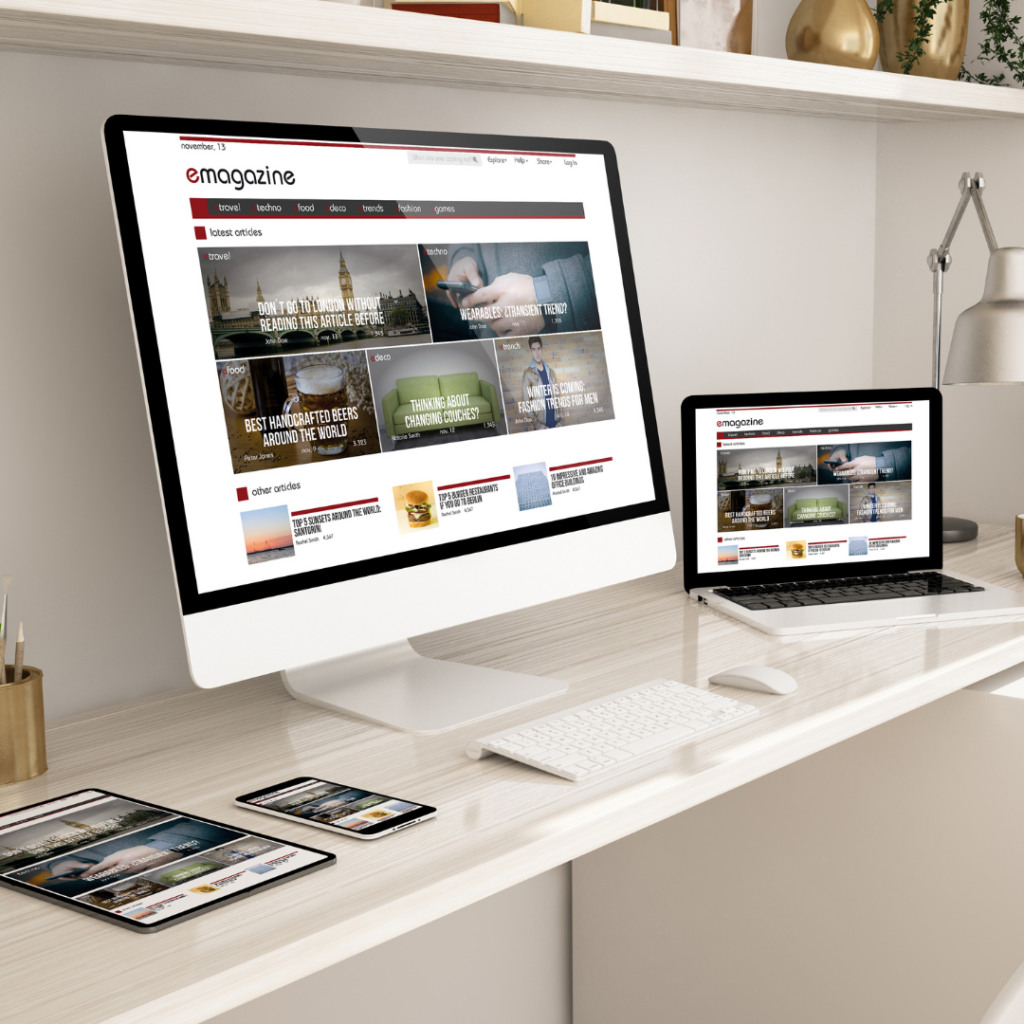Online users have different satisfaction levels, behaviors, and intentions, which become their sole driver while surfing online. The seven website experience elements are navigation, graphical representation, organization, content utility, purpose, simplicity, and readability. A list of the seven most frequently reviewed elements will be discussed in this article.
Let’s begin the discussion!
Navigation
The navigational ability on a web page must have a full menu bar that needs to be consistent and easily accessible, has a search feature embedded into it, and provides ease of usage to the web user.
Graphical representation
Graphical representation of a web page includes high-quality images, multimedia content such as videos and audio, font color schemes, size and texture, visual appeal, and load time of the multimedia elements on the page. Having too much or too little content is part of the graphical representation of a web page.
Organization
The organization of a web page includes its architectural layout, the hierarchy of design, the systematic flow of information, the selection of keywords, and the title headings of the content.
Content utility
The content utility of a webpage refers to having good content on the website to convince users to revisit the page, instigating motivation and inspiration in them, being up to date on the latest information, being relevant to the cause behind the website, and keeping in consideration of the ideal visitor’s content needs.
Why are backlinks the #1 ranking factor in SEO?
Purpose
A web page with a purpose has a unique identity. A purposeful web page has clear intentions, and it has organizational attractiveness both visually and conceptually. A web page with a useful purpose also has clear-cut instructions on its business policy.
Simplicity
Simple does not mean boring. The simplicity of a web page refers to the transparency of headers, unclutteredness of layout, consistency in design, less replication of content, and extreme ease of understanding for all types of visitors.
Readability
A good web page must be easily understandable, well-written with proper grammar, and appropriate writing blocks that appeal to the user. This falls under the readability element of the website.
How to use website elements to bring excellent marketing results?
Using website elements to bring excellent marketing results requires a great deal of planning and research. Depending on the goals, target audience, and desired outcomes, marketers should consider choosing a layout that best suits their needs.
Many website elements can help to bring excellent marketing results. To maximize the impact of these features, it is essential to understand how each interacts with visitors and how they can be used to reach marketing goals.
Optimizing the website’s navigation structure makes it easier for visitors to navigate through pages, which helps keep them engaged with the website’s content. For instance, strategic placement of content blocks and other visuals, such as text boxes and images, can help direct visitor attention toward important information or call-to-action (CTA). Additionally, adding testimonials and customer reviews can increase conversions by instilling trust in potential customers.
Another effective way to leverage website elements for excellent marketing results is by including multimedia components such as videos or podcasts. By incorporating these media types into the website’s design, marketers can create an interactive experience that captures visitors’ attention and encourages them to take action. Additionally, multimedia components also help convey complex concepts more entertainingly than text alone can provide.
Finally, implementing social media integrations into the website design effectively reaches more people in less time. Integrating social media accounts into the website allows brands to share announcements or promotions directly through their pages and connect with their followers in real-time – something that would otherwise require too much effort for individual posts on each platform.
By leveraging various website elements strategically and creatively, marketers can bring excellent marketing results over time. Doing so requires thorough research and thoughtful execution, but it is worth it, given its potential returns on investment.
Studies have shown that combining and adjusting the seven website experience elements will produce an excellent traffic-to-lead conversion ratio. We don’t know how users from different website traffic sources will react to the different calibrations of these seven web experience elements. This is why it is recommended that the dimensions and factors of unified online experiences should be applied. We can conclude that an excellent online customer experience would result in:
1- better brand engagement
2- a positive word-of-mouth (WOM) marketing ratio
3- and a higher number of repeat purchases
Website experience elements do not limit to user design.
As discussed previously, user intent is qualitative and almost impossible to quantify. The difficulty is because many uncontrollable factors, such as geolocation, user profile, and web surfing history, get involved. It is not easy to judge and investigate the precise user intent of the different web traffic sources. Marketers can only make an intelligent guess while comprehending the user’s intentions.
Did you know that 68.1% of the users in 2020 for all industries on the web were mobile users? We cannot ignore such a significant percentage of the audience. Data analysis for mobile users vs. desktop users needs more in-depth discussion since it behaves differently with the intrusions of web experience elements and traffic sources.
A user clicking on a Facebook ad for a mobile device will probably act differently on a web page compared to the desktop divide. The intent changes, location and mindset of the user change. Tablet users are more like Smartphone users as compared to desktop users. The device on which the user is currently active can impact decision-making behavior for online purchases. The same goes for PPC ads, referrals, and other sources. Studies have shown that attitude, performance, region, and online behavior can change when users of specific geographical and demographic attributes engage with online content.





































